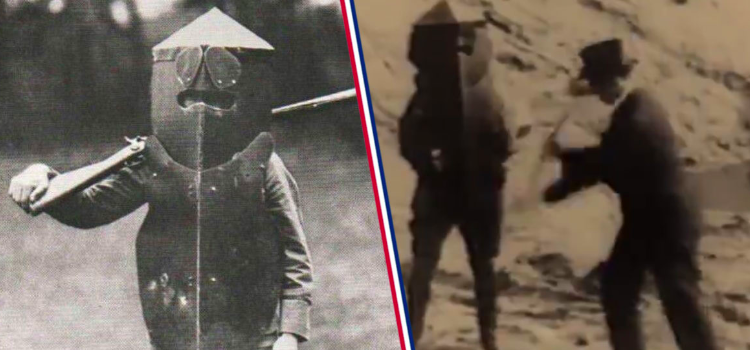One of the most magical feelings in the military is that moment you finally get back to the tent or barracks and can finally shed your Kevlar helmet and IOTV. That moment, when you can finally breathe and realize just how sweaty you were, is just plain glorious.
As much of a slight pain in the ass (figuratively speaking, of course. Literally, it’s a pain in the lower back and knees) as today’s armor is, it’s come a long way. Take, for instance, the first effective ballistic armor developed by the United States Army for WWI.
I present you to the unsightly behemoth known as the “Brewster Body Shield.”
When America made its entry into the first World War, it was an eye opener. War had changed drastically in only a few short years. Now, cavalry on horseback were useless against a machine gun nest, poison gas was filling the trenches, and fixed-wing, motor-driven airplanes were being used for war just twelve years after the Wright Brothers made their historic flight at Kitty Hawk.
The Italians had started fielding their own updated version of knights’ armor for use by the Arditi, but it had more of a symbolic meaning than any practical use. The Germans began giving their sappers protective armor that could take a few bullets along with protecting its wearer’s vital organs from the shock of explosives. America thought they could outdo them all with their own, suped-up version.
America wanted some sort of protection for its infantrymen if they ever dared to cross the barrage of bullets that flew across No-Man’s Land and they needed it as fast as they could. The U.S. Government turned to a man who created armor intended for boxing training, Dr. Guy Otis Brewster.

(San Francisco Call)
Dr. Brewster began creating a suit of armor that was made out of 0.21 inch chrome nickle steel — enough to withstand .303 British bullets at 2,700 ft/s (820 m/s). It was also given a V-shaped design to minimize the direct impact of any oncoming bullets. The whole thing came in two pieces and weighed a total of 110 lbs.
Then came time for the field test. Dr. Brewster invited Army officers and representatives from the steel mills and rubber companies to come witness. Being the insane scientist that he was, he donned the armor himself and stood in the firing line for the test.
His assistant swung at him with a hammer and a sledgehammer before eventually moving on to being shot by a Springfield rifle. He said that being shot it the suit was “only about one-tenth the shock as being struck by a sledgehammer.”
You can watch the recording below.
Despite its protective capabilities, it was deemed too heavy, too clumsy, and way too large to ever be fielded. Dr. Brewster didn’t take that news lightly and wanted to prove its worth. He tested it again and was reportedly able to withstand a hail of bullets from a Lewis Machine Gun — with him inside the suit, obviously.
In the end, he never managed to get the Body Shield approved by the U.S. government — seeing as it was impossibly immobile and occluded visibility almost entirely. He would, however, later make a steel-scaled waistcoat that resembles more modern flak vests.
This article originally appeared on We Are The Mighty
More From We Are The Mighty
5 Reasons Why Troops Stick Together After the Military
4 Reasons Why Showering On Deployment is Disgusting
7 of the Greatest Songs Every Veteran Knows
6 Things You’d Take Back Before Leaving the Military
6 Dumb Things Veterans Lie About on the Internet
Follow We Are The Mighty on Twitter
READ NEXT: THIS IS HOW ZOMBIES WOULD FARE AGAINST THE US MILITARY



